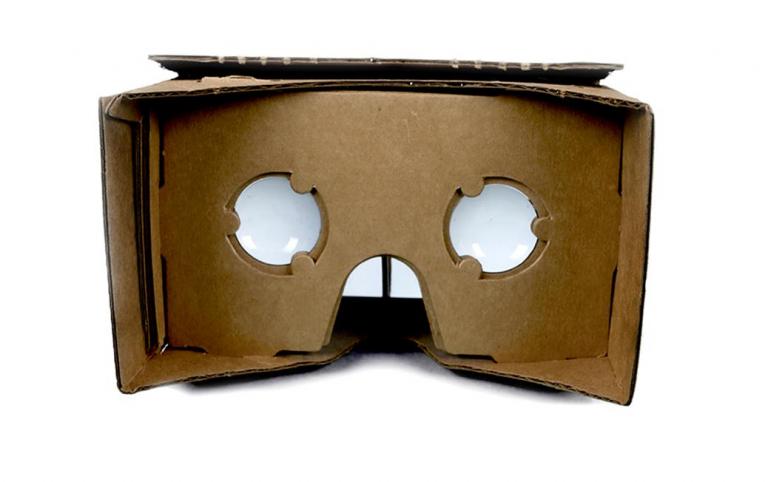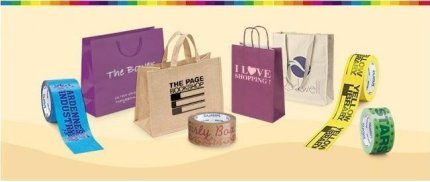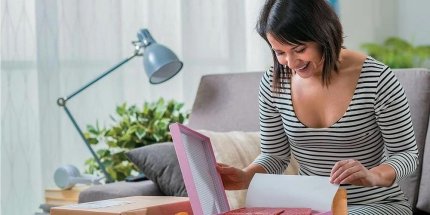We live in a decade where technological innovation is pretty commonplace – everyday there’s something new. The news is full of stories of fresh ideas for everything from entertainment to medicine. There always seems to be a sleek new machine being made or a more advanced material being used. But after a little research, Rajapack have discovered that even something as established as cardboard is getting its time in the technological limelight.
Don’t believe us? Well, we’ve gone out to find the most impressive new technologies that use cardboard and some of the things we found may surprise you.
Google Cardboard
Image: Google Play
Back in September of 2012, the Oculus Rift virtual reality headset was successfully funded on Kickstarter. Heralded as the second coming of VR, the Oculus Rift has since been purchased by Facebook for two billion dollars and seems to be going from strength to strength. Google however, recently unveiled a very different take on virtual reality.
You don’t need any fancy new equipment to enjoy a realistic, 3D experience. All you need is Google Cardboard, a new app that works with a headset. So simple, it’s made out of (you guessed it) cardboard!
Running on all smartphones running Android 4.1 and above, the app turns your phone into a virtual reality screen, meaning you can fly around Google Earth or watch a 360 degree animated short film from the comfort of your living room without shelling out for any expensive kit. Just simply snap you smartphone into the cardboard headset and you’re ready to go.
Google Cardboard is perhaps the best fusion of old and new tech we’ve seen in years. It’s free, it’s simple and you can even download the templates for the headset yourself so you can construct it from cardboard you may have left over around the house! Working best with E Flute corrugated cardboard, you can print out the template which marks how you can cut, glue and fold your way to virtual reality with just a few extra essentials; a couple of lenses, magnets, a rubber band and some Velcro.
Cardboard Furniture
Image: Kickstarter
Earlier this year, Zach Rotholz successful secured more than twice his Kickstarter goal of $25,000 to create The Cardboard Standing Desk. Though they are larger than something you can probably make from your left-over packages at home, Rotholz’s furniture just goes to show that with a bit of ingenuity you could furnish your entire house of out cardboard.
©Copyright Raja
At our Raja HQ in Paris we feature a sturdy cardboard bookcase. Could you imagine having a bookcase made of cardboard in your house?
La Wiggle Side Chair, designed by the famous designer Franck O Gehry, is another cardboard delight that you can find in our Paris HQ. Aptly named and very comfortable, we hope it inspires your own cardboard furnishing ideas!
Cardboard Vacuum Cleaner
Image: Cardboard Vax
In an effort to reduce waste, Vax have opted to create a vacuum cleaner out of recycled (and recyclable) cardboard. The company insist the vacuum is not a gimmick or a stunt and is fully functional, aiming to begin trials in people’s homes within the next six months. As well as a more sustainable option, the cardboard structure of the vacuum means that you can personalise it any way you want – time to get creative while you tidy up!
Cardboard Speakers
Image: Tech Will Save Us
Technology Will Save Us create basic gadget kits that you build yourself to help people of all ages learn the basics of technology and design. Working in schools and running workshops as well as selling individual kits from their website, the Technology Will Save Us team has a passion for education and love to get everyone involved in building and understanding a variety of gadgets. Some of them even involve using everyday household objects, such as their speakers you can make out the very cardboard box they arrive in!
Eco-made cardboard phone amp
Image: Eco-Made
Founded by David LeGrand and Hayley Strauss in 2012, Eco-made is a company dedicated to creating environmentally friendly products that bring a balance of high design with recyclable materials. The fruit of their labour: the eco-amp. Working on the same simple principles of gramophones, the eco-amp is easy to construct and can be used with almost any smartphone or tablet device that has an external speaker.
What’s next?
Because cardboard is a cheap, lightweight and sustainable option, it’s no surprise that the technology sector is starting to see its benefits. So what will we see next? Well, at this rate of technological innovation, out of the box thinking could lead us to just about anything, so long as we continue to see beyond cardboard’s imagined constraints.
























